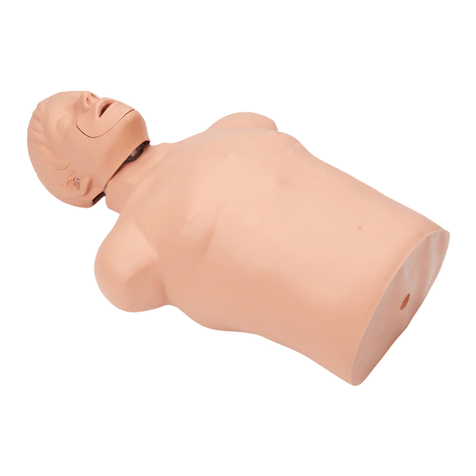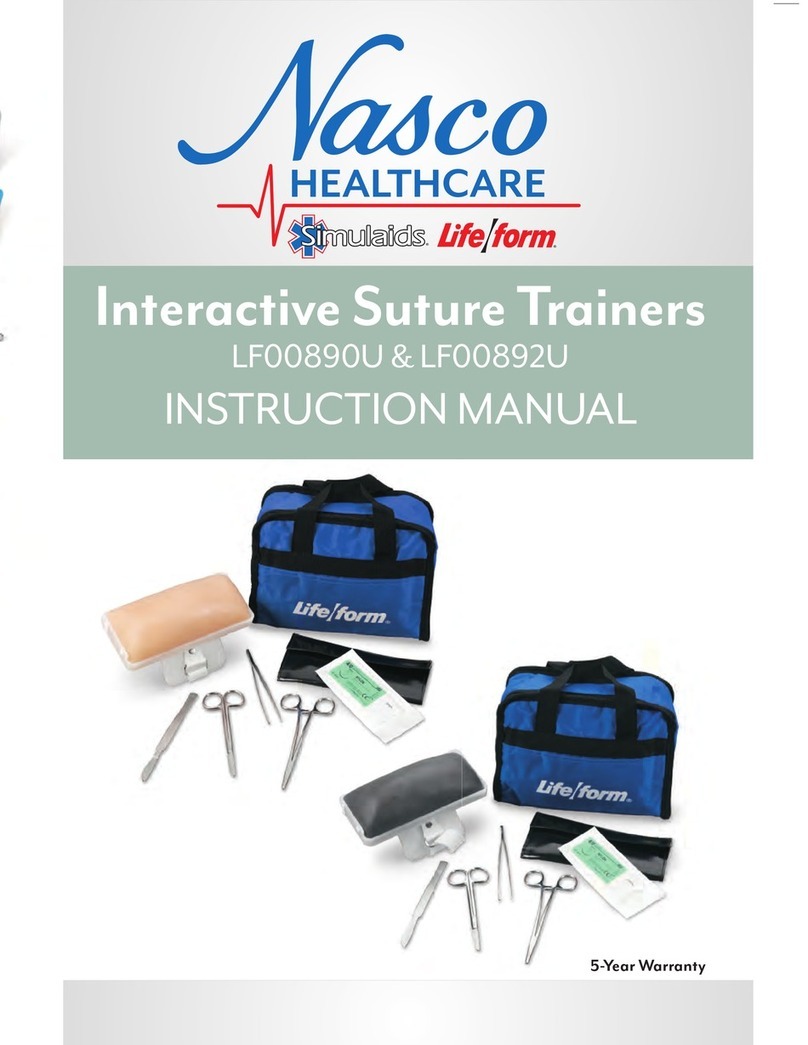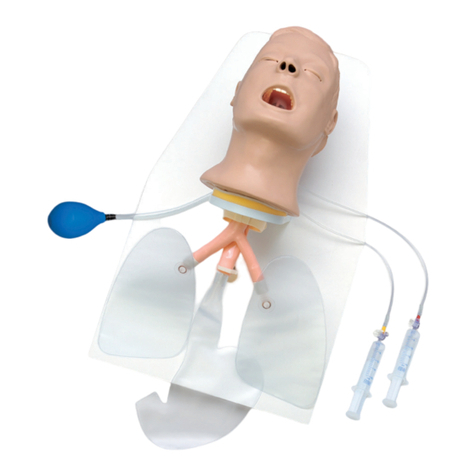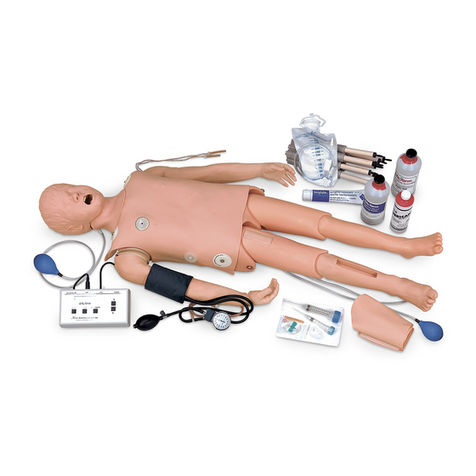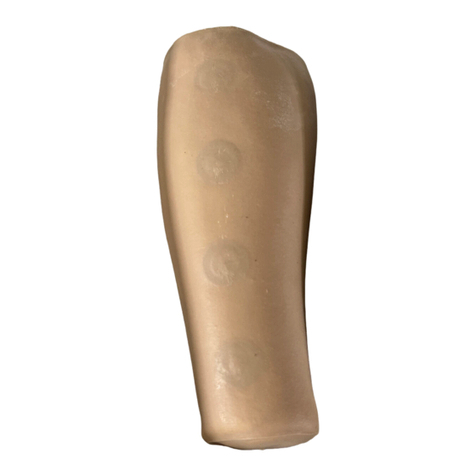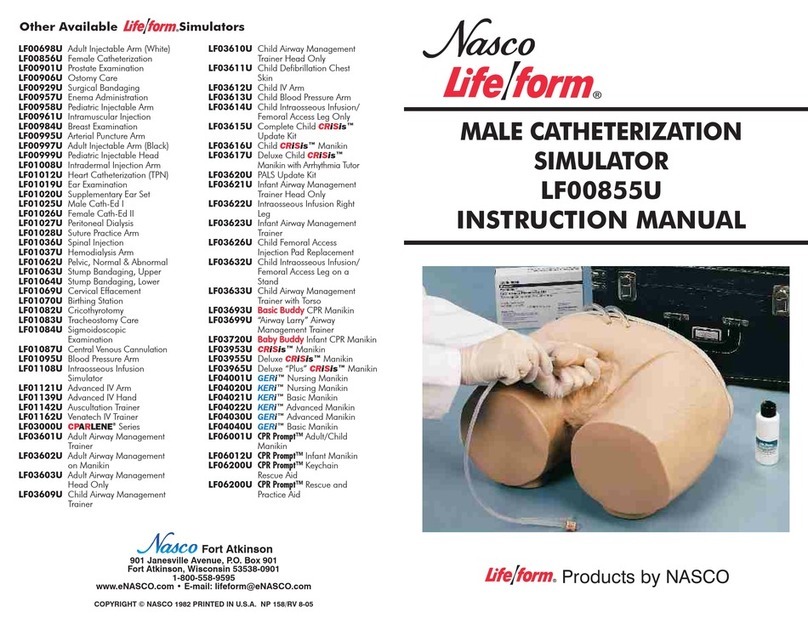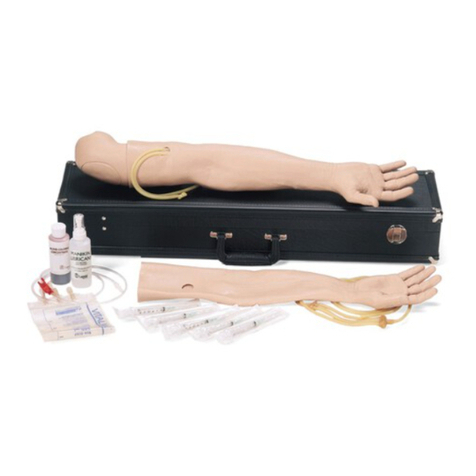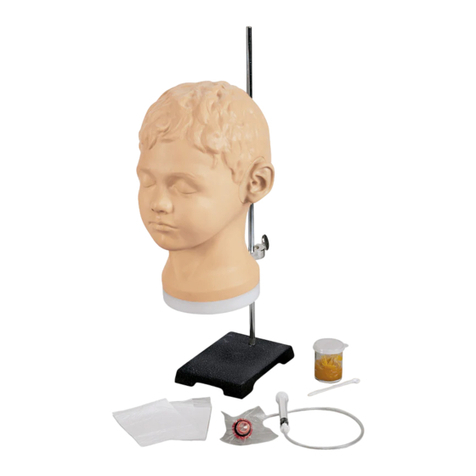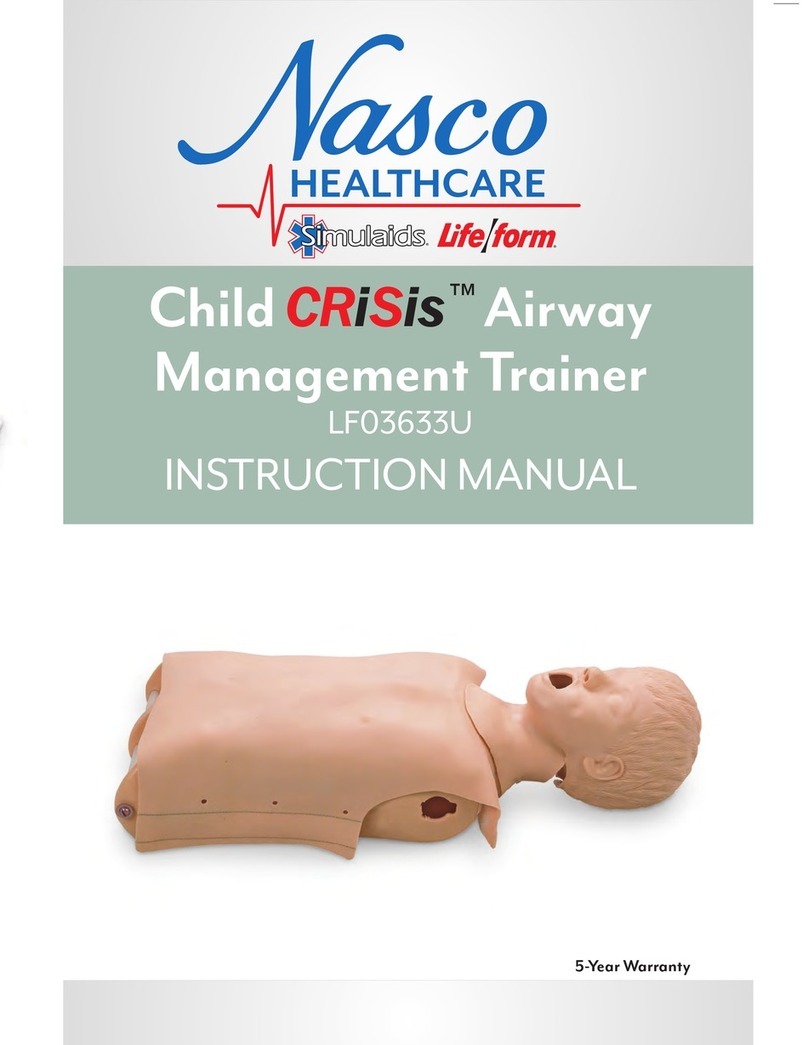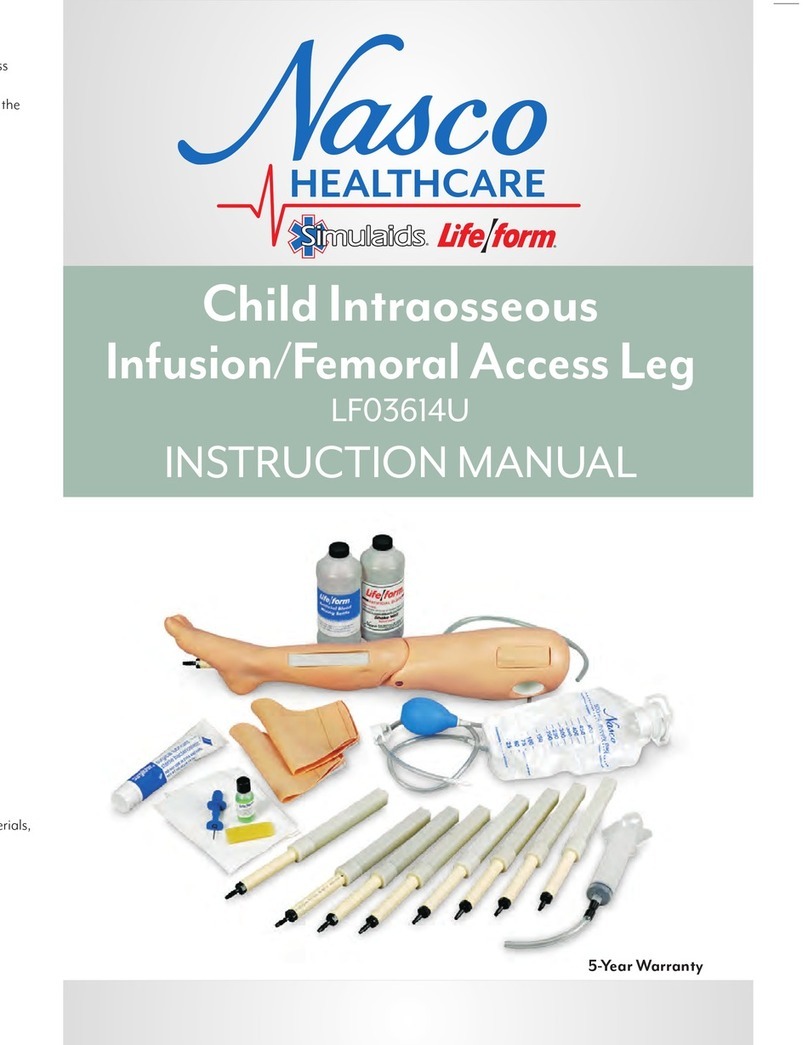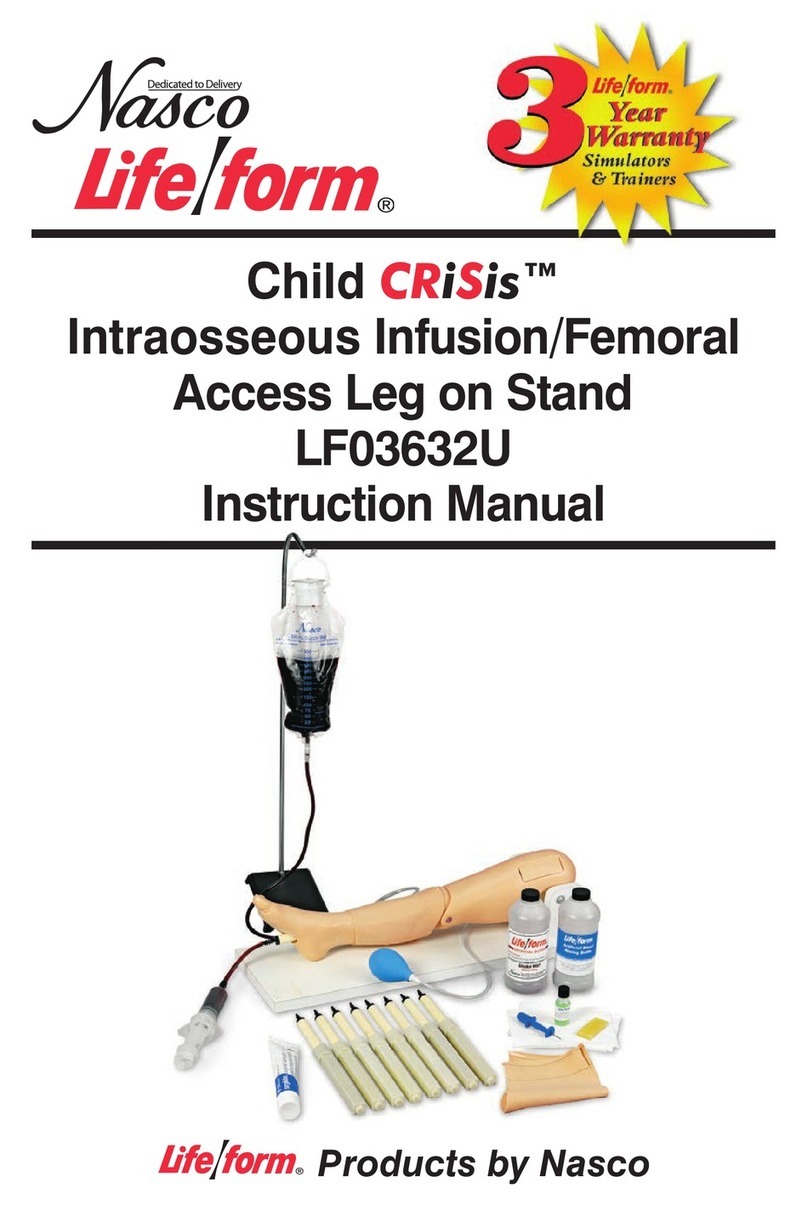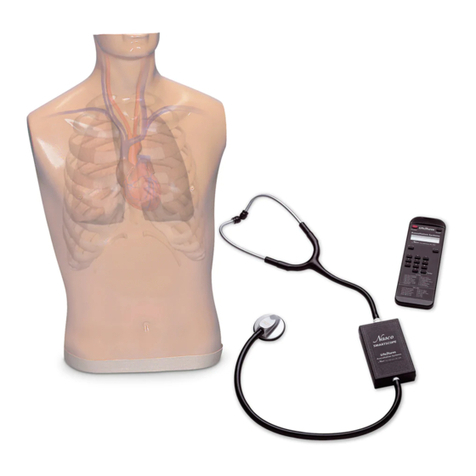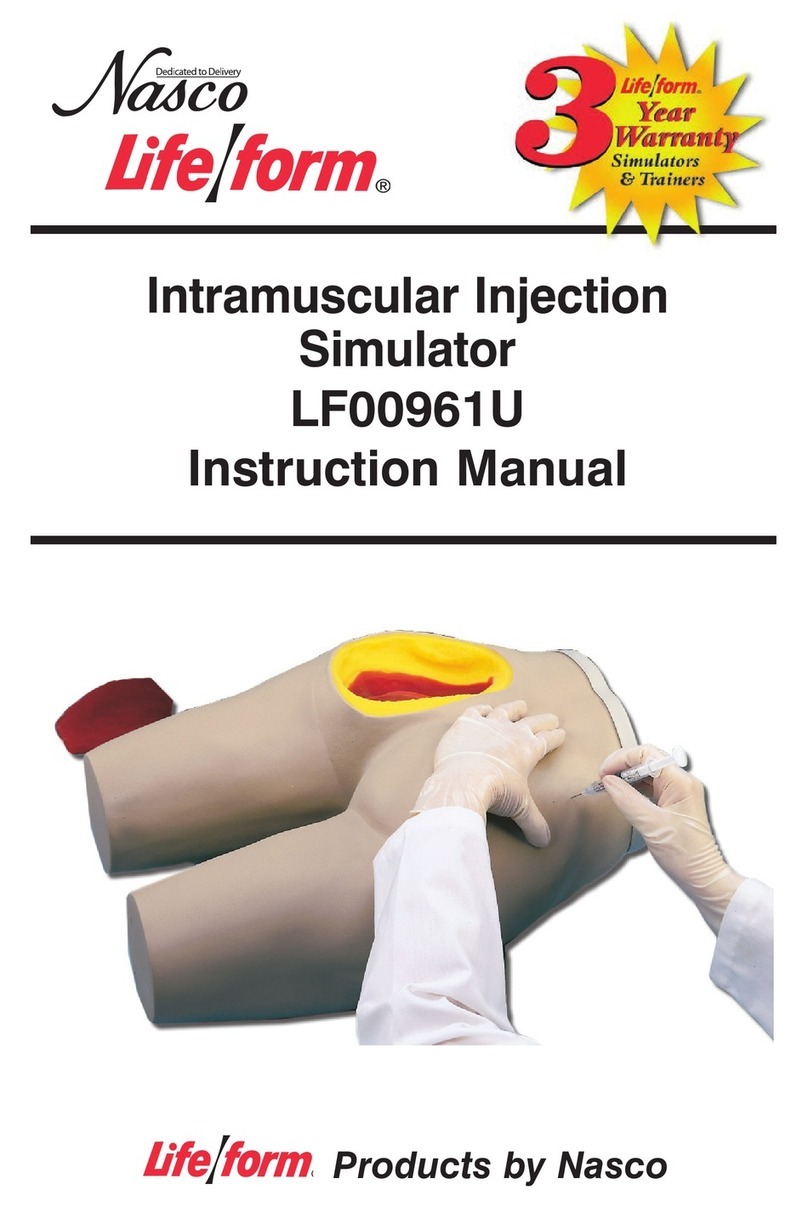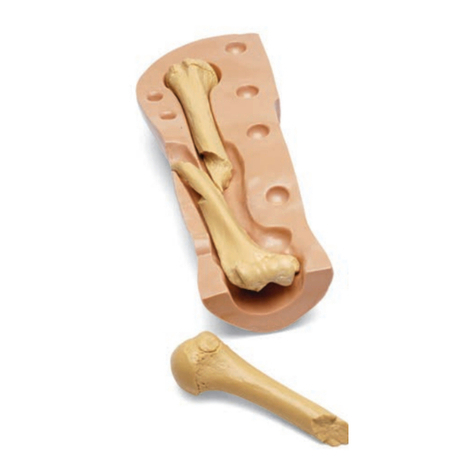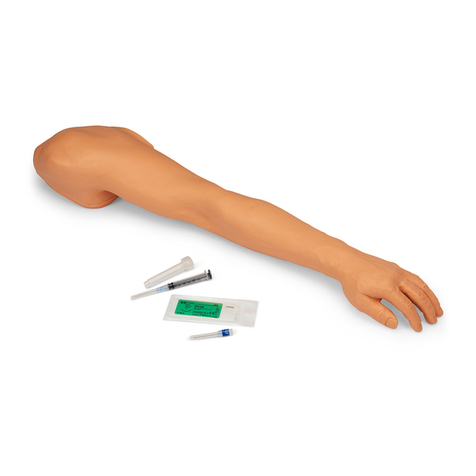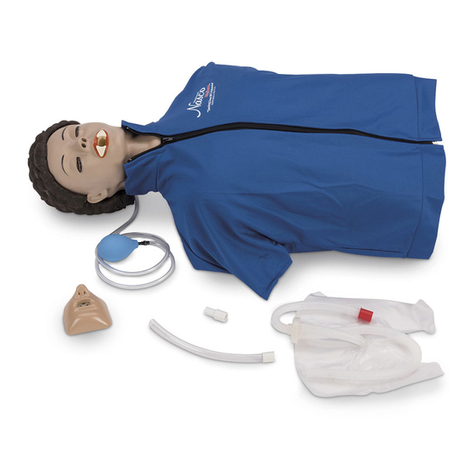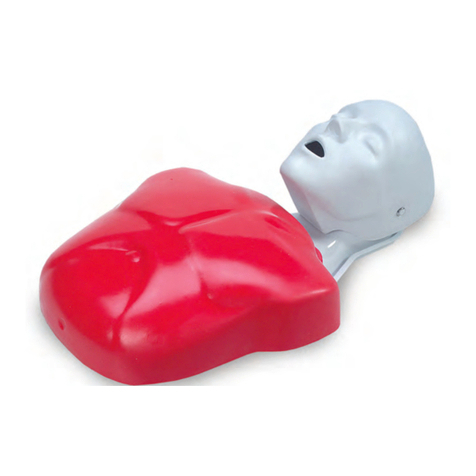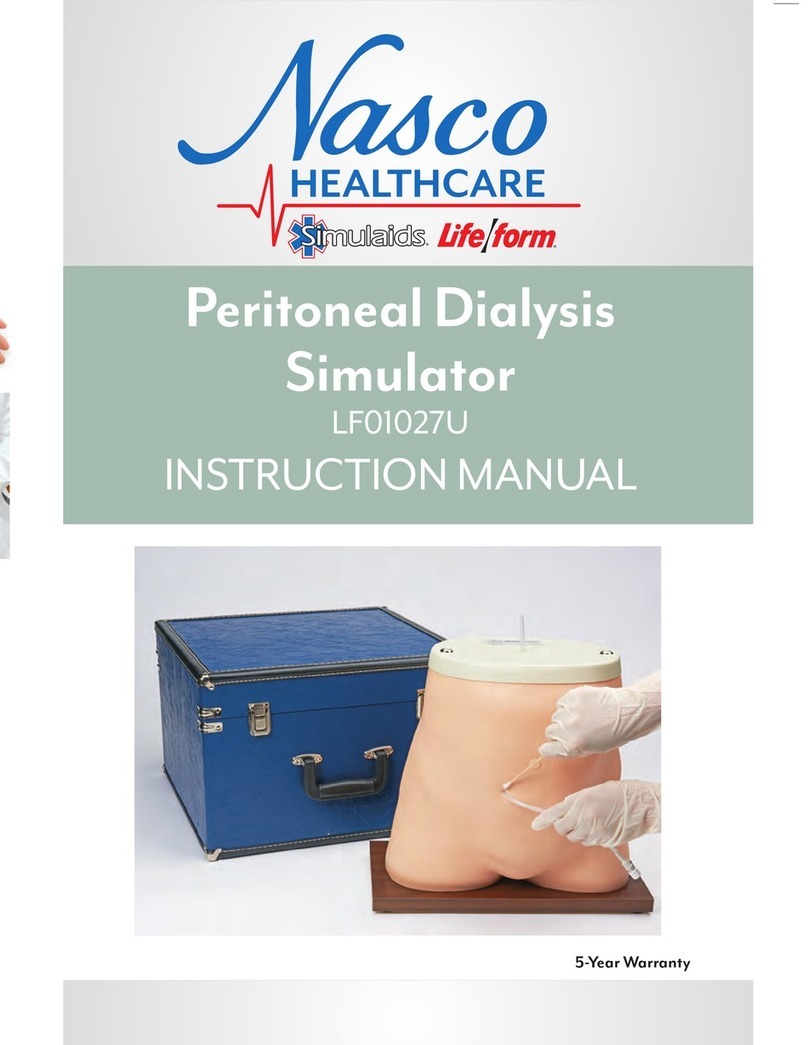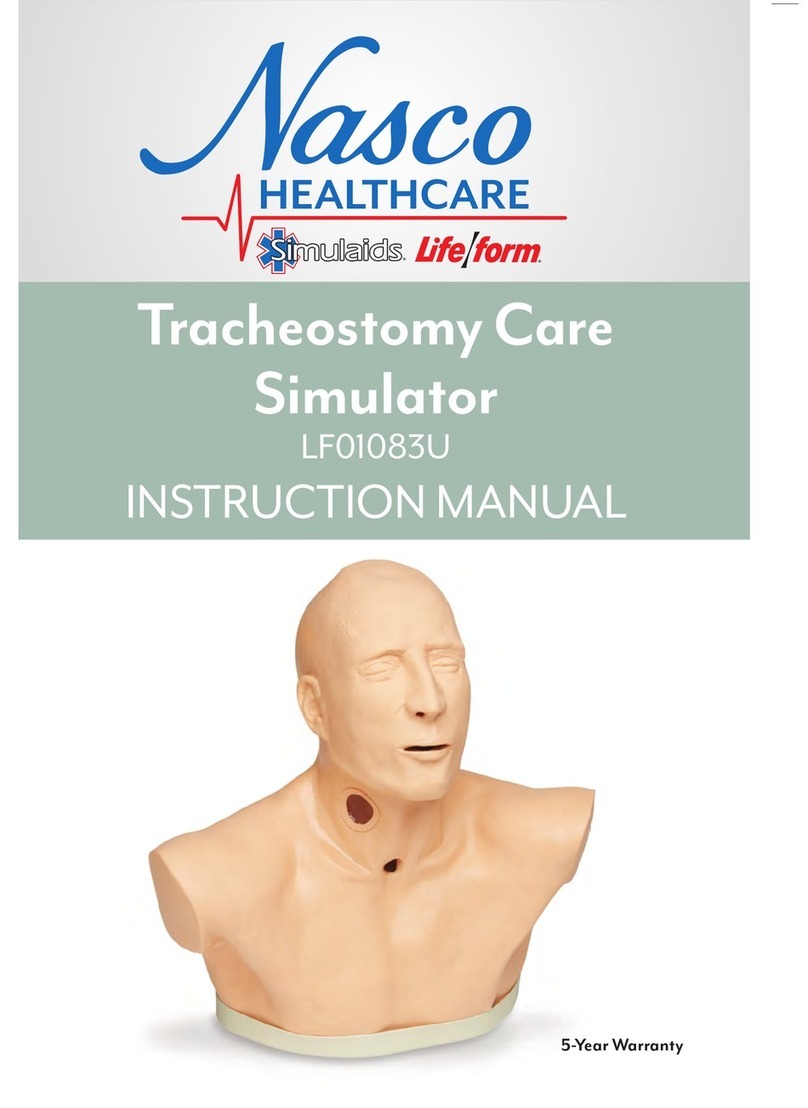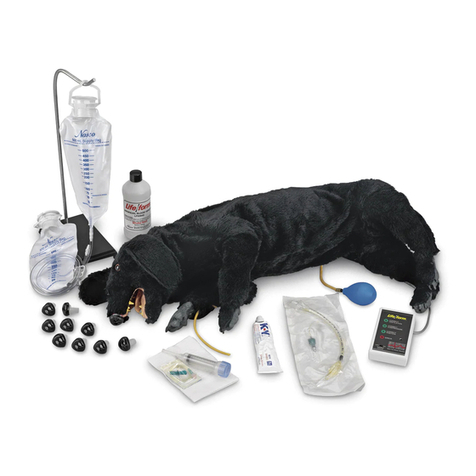
Now, open both bag clamps and
adjust the infusion rate with the
clamp on bag A. Should bag B
fill, simply close the clamps on
both bags, unhook them (be
aware of some leakage), and
switch each to the other’s posi-
tion. (See figure 13.) Hook them
up and open both clamps. Bag
B is now the supply bag. This
switch can be done as often as
desired. Note: Always regulate
the flow of “blood” from the bag
on the stand,
and open the other
bag clamp
. To draw “blood” again,
simply close the clamp on the
bag that is lying down.
Causes for Failure in Function
During the procedure of drawing
“blood,”
if “blood” cannot be aspirated:
A. The clamp on the IV tubing of
the infusion bag may not be
opened.
B. Air could be trapped in the
venous system. Simply flush
the system slowly, draining
some “blood” or distilled water,
whichever you are using, until
all air bubbles are eliminated.
C.
If these measures do not unclog
the venous system, try using a
large (50 cc) syringe to force
fluid through the tubing.
D. If none of these measures
work, peel off the skin to the
ankle.DONOTREMOVEIT
FROM
THETOES.Examineall
the tubing for
possible kinks.
Generously cover the inside of
the leg with baby powder and
pull the skin back over the leg
core.
Care of the Simulator
This training simulator has been
designed to provide the greatest
possible durability and lowest main-
tenance while not compromising
the realism of use. The following
are some suggestions for helping
you yield the maximum life from this
unique simulator.
A. Before Storing the Leg
1. Disconnect the IV bag and
pour the fluid back into the
container.
2.RinsetheIVbag.
3.Draintheleg.Openthepinch
clamp
and tip the leg up until
the fluid is removed.
Flush the
leg with water. Rinse
off the
exterior of the leg and dry.
Return the leg to storage.
B. Needles
Hypodermic needles are actually
small cutting tools. Puncturing the
skin and vein with needles results
in small cuts or slits, which will
eventually lead to deterioration.
The larger the needles, the larger
the cuts made in the skin, and the
shorter the life of the simulator. It
isrecommendedthat22-gaugeor
smaller needles be used. Always
use sharp needles. Dull or bent
needles cause excessive tearing.
C. Distribution of Punctures
The vein is in contact with the skin
from the point it enters the leg to
the point of exit. If the injections
are distributed along the length
of the vein, without deviation from
acceptable practice, the product
will last longer.
D. Tubing Sealant
A Vein Tubing Sealant Kit (LF01099U)
has been developed for use with
Life/form® Injectable Simulators. It
will effectively seal punctures in the
tubing.
5
